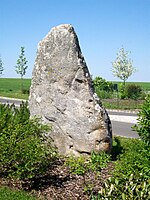Turkish Airlines Flight 981 (TK981/THY981) was a scheduled flight from Istanbul Yeşilköy Airport to London Heathrow Airport, with an intermediate stop at Orly Airport in Paris. On 3 March 1974, the McDonnell Douglas DC-10 operating the flight crashed into the Ermenonville Forest, 37.76 kilometres (23.46 mi) outside Paris, killing all 335 passengers and 11 crew on board. The crash was also known as the Ermenonville air disaster.
Flight 981 was the deadliest plane crash in aviation history until 27 March 1977, when 583 people died in the Tenerife airport disaster. It remains the deadliest single-aircraft accident without survivors, the second hull loss, the deadliest accident involving the McDonnell Douglas DC-10, and the deadliest aviation accident to occur in France.
The crash occurred when an incorrectly secured cargo door at the rear of the plane burst open and broke off, causing an explosive decompression that severed critical cables necessary to control the aircraft. To maximize the working space within the cargo hold, the cargo doors opened outwards, making them vulnerable to being forced open at high altitudes under normal in-flight pressure. To prevent this, a special latching system was used that locked shut under pressure when properly closed. To ensure the latches were properly positioned, a handle on the outside of the door pressed small metal pins into the latches; if the latches were in an improper location the pins would not align and the handle would not close.
The handle on DC-10 cargo doors could close despite the latches being in the wrong position, a discovery made after previous services, most notably during the incident involving American Airlines Flight 96 in 1972. This was because the linkage between the handle and the pins was too weak and allowed the handle to be forced into the closed position. A minor change had been ordered to install a support plate for the handle linkage to make it stronger; manufacturer documents showed this work as completed on the aircraft involved in Flight 981, but the plate had not in fact been installed. It was also noted that the handle on the crash aircraft had been filed down at an earlier date to make it easier to close the door. Finally, the latching had been performed by a baggage handler who did not speak Turkish or English, the only languages provided on a warning notice about the cargo door's design flaws and the methods of compensating for them. After the disaster, the latches were redesigned and the locking system was significantly upgraded.
In the following investigation, it was found that a similar set of conditions, which had caused the failure of an aircraft floor following explosive decompression of the cargo hold, had occurred in ground testing in 1970 before the DC-10 series entered commercial service. The smoking gun was a memo from the fuselage's manufacturer, Convair (a division of General Dynamics), to McDonnell Douglas, in which the series of events that occurred on Flight 96, and fatally on Flight 981, was foreseen; it concluded that if these events occurred it would probably result in the loss of the aircraft. In spite of this warning, nothing was done to correct the flaw. The consequences of this entirely avoidable crash were many, including – but not limited to – some of the largest civil lawsuits to that date.











